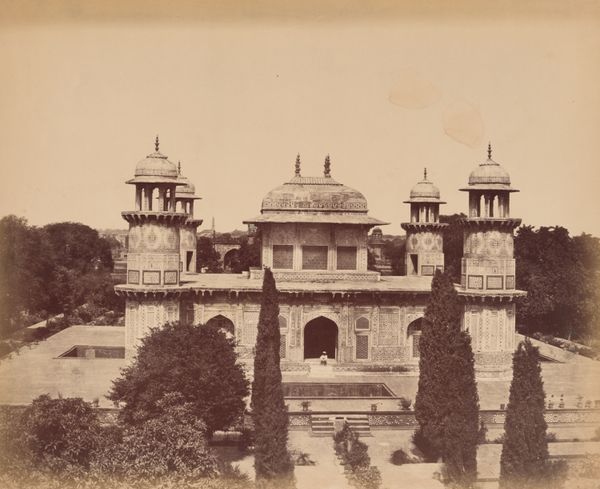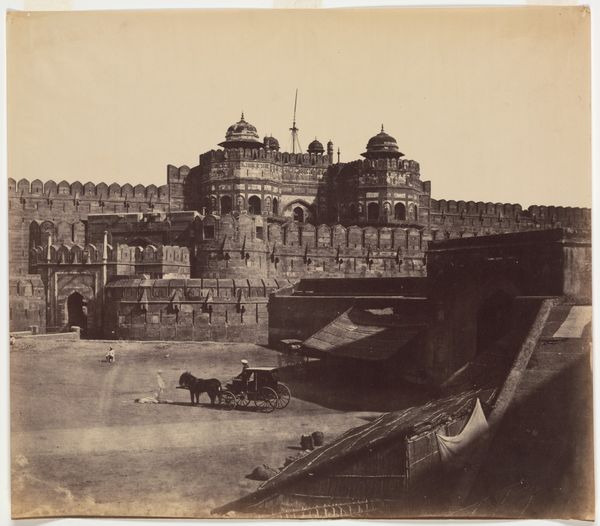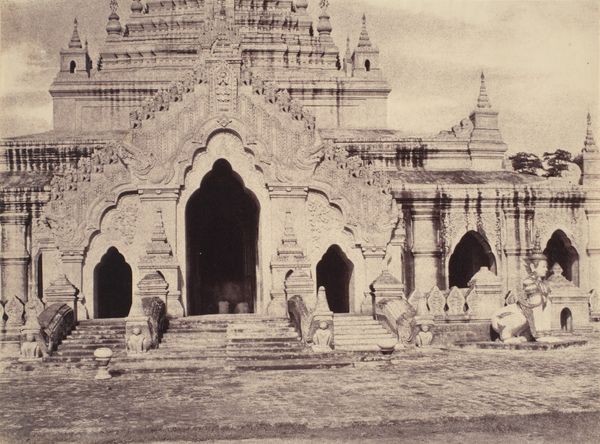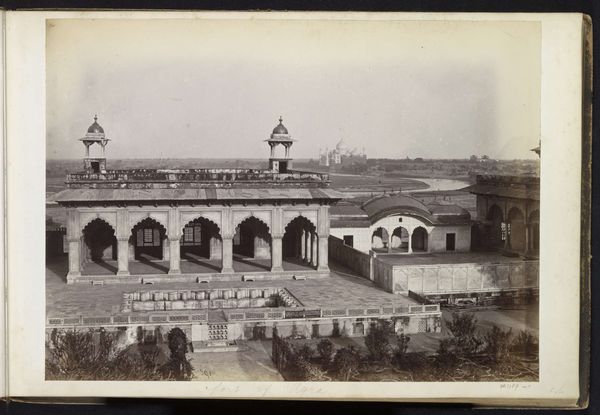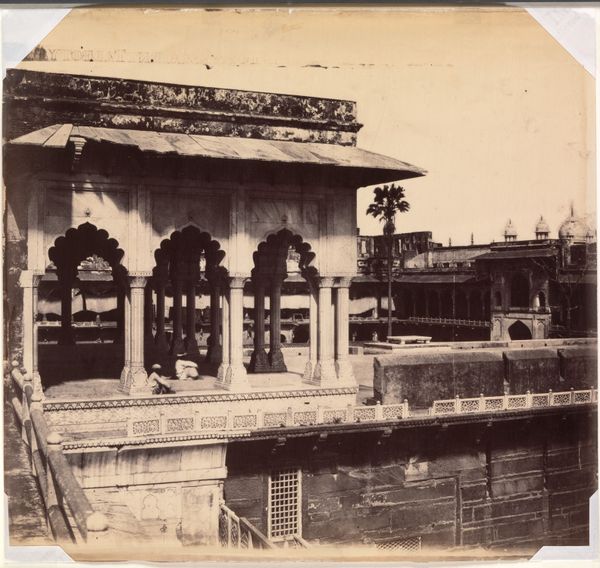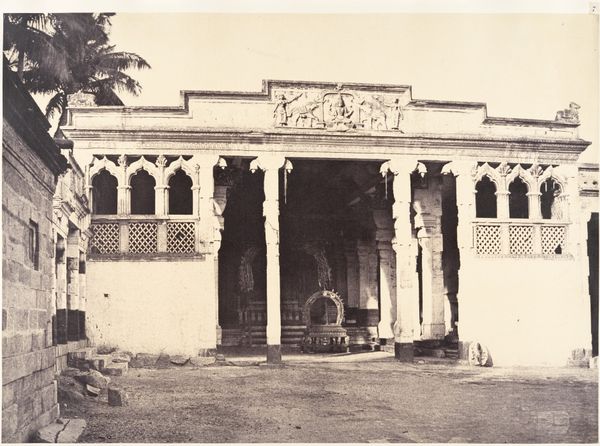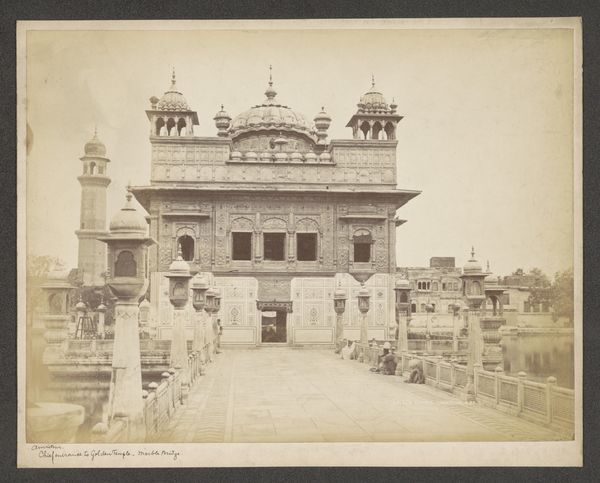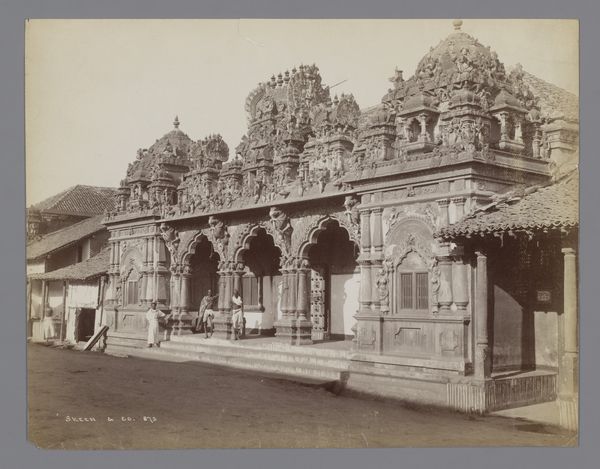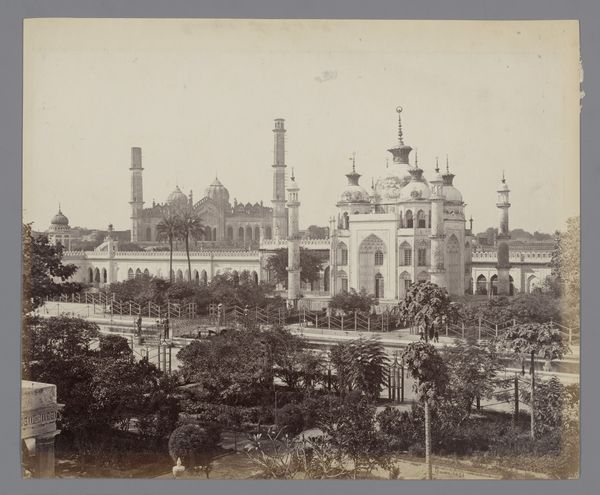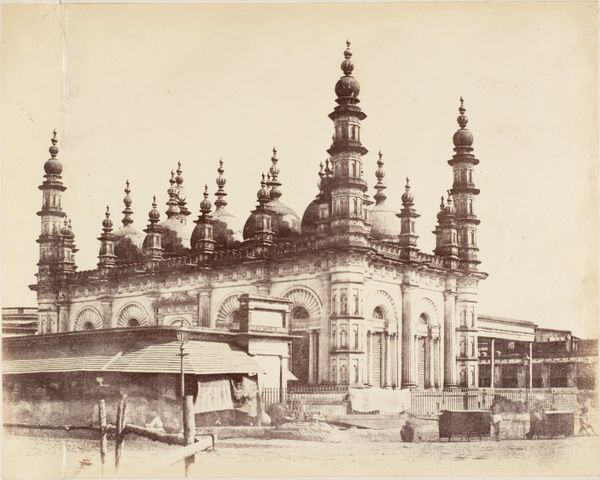
photography
#
asian-art
#
landscape
#
photography
#
19th century
Dimensions: image/sheet: 15.4 × 20.9 cm (6 1/16 × 8 1/4 in.) mount (1): 23 × 26.1 cm (9 1/16 × 10 1/4 in.) mount (2): 42.9 × 55.8 cm (16 7/8 × 21 15/16 in.)
Copyright: National Gallery of Art: CC0 1.0
Curator: Here we have Louis Rousselet’s photograph, "The King’s Temples, Ulwar," taken around the 1860s. The sepia tones give it such a serene, almost dreamlike quality, doesn’t it? Editor: It does. But I’m immediately drawn to the way the photographer emphasizes the sheer labor evident in the intricate structures. Look at the rows and rows of arches, the crafted stonework climbing the hillside. Curator: Yes, and consider this image in the context of 19th-century orientalism and the power dynamics inherent in European artists representing other cultures. How do we read an image like this, produced during a period of colonial expansion? Editor: I am concerned with what that production represents materially. What were the working conditions of those building these structures? Were local materials used or imported? That would shift the understanding of Rousselet's work significantly. Curator: The image romanticizes the temples within the broader landscape, though. Doesn't the architectural style indicate influences and exchange between different artistic traditions, showing a global intersection of styles instead of imperial imposition? Editor: Potentially, though that style also shows that somebody made it. What does such a confluence reveal about labor practices or material exploitation at the time of its creation? And in what condition do those local laborers appear within Rousselet’s representation of place? Curator: But is it so problematic if it simply captures the aesthetics? Can it not inspire cultural dialogue, prompting reflection on shared values, histories, and aspirations that transcend those imperial structures? Editor: Perhaps, but that aspiration could ignore realities embedded in making art, which also participates in and depends upon socio-economic inequalities, however subtly. It needs to be carefully contextualized within those conditions. Curator: True. Maybe the strength here lies in this dialogue—challenging simplified readings. I now recognize my response has been situated and positioned from where I see things. Editor: Right. By considering process and materials of making—not just what's represented—the complexities emerge and challenge conventional consumption of art and culture, even from centuries ago.
Comments
No comments
Be the first to comment and join the conversation on the ultimate creative platform.
